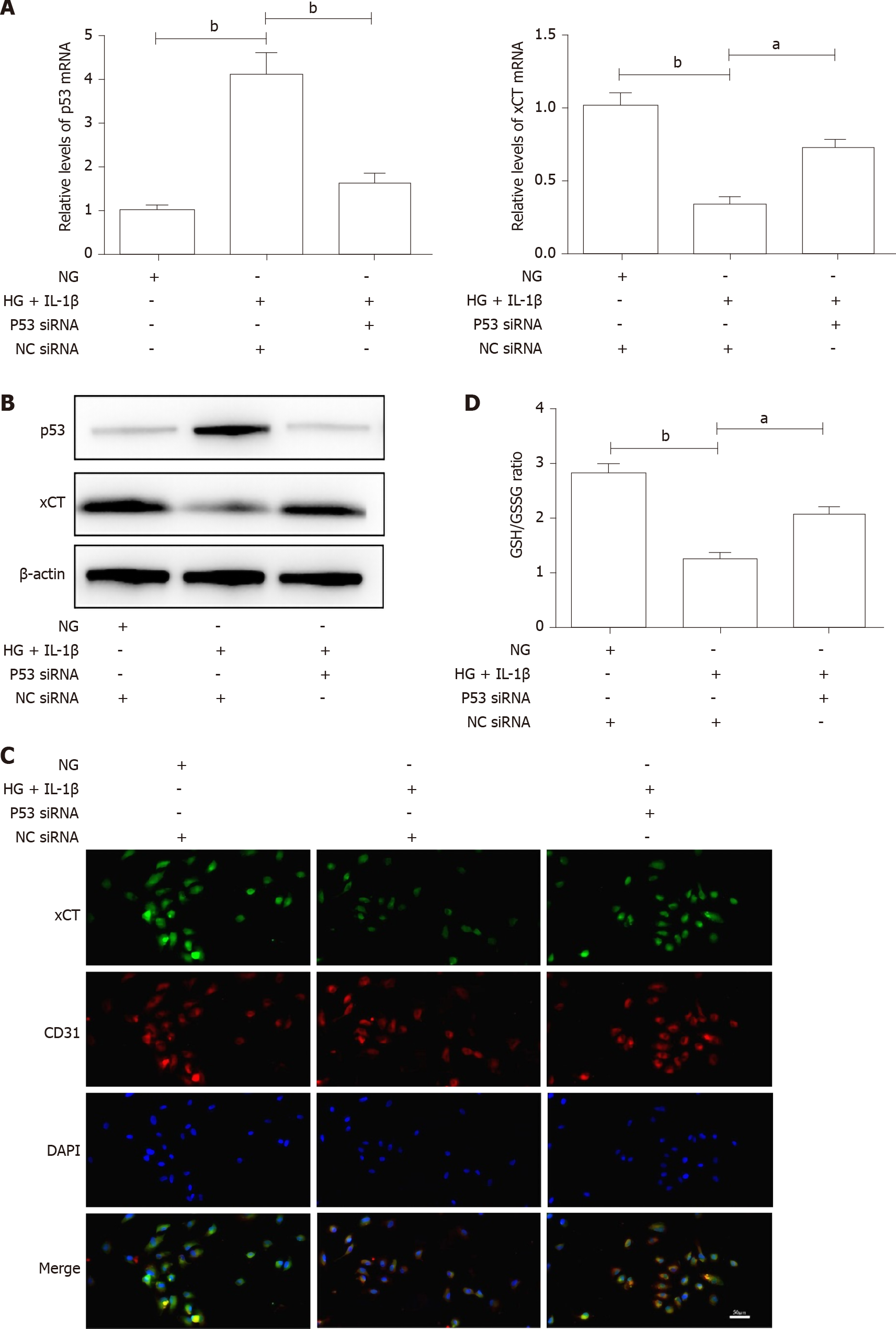Copyright
©The Author(s) 2021.
World J Diabetes. Feb 15, 2021; 12(2): 124-137
Published online Feb 15, 2021. doi: 10.4239/wjd.v12.i2.124
Published online Feb 15, 2021. doi: 10.4239/wjd.v12.i2.124
Figure 3 High glucose and interleukin-1β activate the p53-xCT (the substrate-specific subunit of system Xc-)-glutathione axis in human umbilical vein endothelial cells.
A: Human umbilical vein endothelial cells were transiently transfected with p53 small interfering ribonucleic acid or NC small interfering ribonucleic acid and then treated with NG, high glucose (30 mmol/L) and interleukin-1β (10 ng/mL). After treatment for 48 h, the messenger ribonucleic acid levels of p53 and xCT in human umbilical vein endothelial cells with different treatments were determined using real-time polymerase chain reaction analyses. β-actin was used for normalization; B: The protein levels of p53 and xCT were determined using Western blot assays. β-actin was used for normalization; C: The localization of xCT was detected by immunofluorescence. xCT is labeled green, and CD31 is labeled red. The nucleus is labeled blue. Scale bar: 50 μm; and D: The intracellular glutathione/oxidized glutathione (glutathione/oxidized glutathione) ratio was measured with the glutathione and oxidized glutathione assay Kit. aP < 0.05 vs the control group. bP < 0.01 vs the control group.
- Citation: Luo EF, Li HX, Qin YH, Qiao Y, Yan GL, Yao YY, Li LQ, Hou JT, Tang CC, Wang D. Role of ferroptosis in the process of diabetes-induced endothelial dysfunction. World J Diabetes 2021; 12(2): 124-137
- URL: https://www.wjgnet.com/1948-9358/full/v12/i2/124.htm
- DOI: https://dx.doi.org/10.4239/wjd.v12.i2.124









